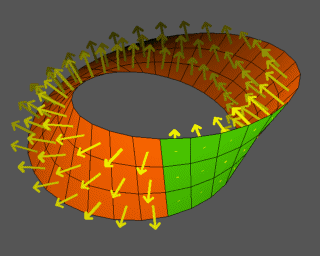|
Definition / description
Wikipedia defines number as "a mathematical object used to count, measure, and label"
We want to define "number" in terms mapped to the Closed Loop framework -- and connected through it to all other major mathematical and semantic definitions.
Numbers are going to be defined as "intervals" -- as bounded ranges in a linear/sequential "totally ordered" structure like a row or a vector, and they are given symbolic names/labels, which we call "numerals" (0,1,2,3,4,5,6...)
We are going to construct those definitions out of synthetic dimensions
***
Newer idea as this project grows --
- Start with the "natural numbers"
- Map natural numbers to objects -- like "apples" -- 1 apple, 2 apples, three apples -- first apple, second apple, third apple
- Integer numbers
- Rational numbers
Sun, May 2, 2021
|
|

|
|
Reference
A number is a mathematical object used to count, measure, and label. The original examples are the natural numbers 1, 2, 3, 4, and so forth. Numbers can be represented in language with number words. More universally, individual numbers can be represented by symbols, called numerals; for example, "5" is a numeral that represents the number five.
As only a relatively small number of symbols can be memorized, basic numerals are commonly organized in a numeral system, which is an organized way to represent any number. The most common numeral system is the Hindu–Arabic numeral system, which allows for the representation of any number using a combination of ten fundamental numeric symbols, called digits. In addition to their use in counting and measuring, numerals are often used for labels (as with telephone numbers), for ordering (as with serial numbers), and for codes (as with ISBNs). In common usage, a numeral is not clearly distinguished from the number that it represents.
https://en.wikipedia.org/wiki/Number
|
|







